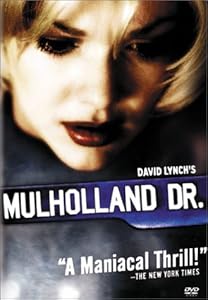 Cover of Mulholland Drive
Cover of Mulholland Drive
Understanding buyers today takes more than just figuring out who they are. In the pursuit to get at who buyers truly are, we’ve explored the many areas of profiling, demographics, psychographics, and other numerous means to literally data mine our way into understanding the buyer. While these means are helpful, what is lacking is the ability to understand the buyer’s story.
Everyone loves a good story. Good stories captivate us. We admire those who can as well as have the gift to tell stories verbally. Many of our prolific authors, writers, and screen writers today have that innate ability to write a good story. Good stories also have a way of moving people whether it is emotionally or to act upon the essence of the story told. These many aspects of good stories are exactly what companies today need to not only understand buyers but to also enable both buyers and personnel to act for the greater good of each other.
What are the essential elements of a good buyer’s story? Let’s take a look at a few:
Buyer Personas
Let me first point out that when I refer to buyer personas, I refer to the entire process or methodology of crafting buyer personas. Buyer personas are often confused with customer or buyer profiles. The analogy that comes to mind is that you can see an ad for a movie and see an actress cast in a role. You will know she is playing a certain role but you will not know the depth of the story unless you see the movie. The buyer persona methodology, not the profile, provides the critical story lines needed to craft a good story about the buyer and get to the depth of the buyer’s story.
Supporting Roles
One of my favorite categories in the Academy Awards is that of supporting roles. Sometimes they become more memorable than the lead actors or actresses themselves. Without them, the story can crumble without any meaning or understanding. In understanding the buyer’s story, we need to understand the supporting roles that give meaning and understanding. We have given many labels to these supporting roles – whether they are influencer, decision-maker, user, and several others. The key though is that while these may be true, there may be other types of supporting roles we have no clue about unless we flush out the story at its fullest depth.
Beginning, Middle, and an End
Well written stories as well as screen plays give us the ability to look back and see how a story develops. Oftentimes, when either finishing a book or leaving a movie, we can’t wait to tell someone about the story we just read or saw. What we think of in good stories is usually the beginning, the middle, and the end. Buyer stories can also have a means of helping us to understand how they experienced a journey that had a beginning, middle, and an end. Giving us the detail of who they interacted with, the story plot, and how they reached a conclusion to buy – or perhaps not to buy. Of course, like many good stories, we hope for sequels to continue with our buyer.
Buyer Experience
Good stories help us gain an experiential understanding of the characters and the story plot. For some of us, we are easily moved to talk out loud when reading a story, cry at a movie, laugh loudly, and other expressions. Good buyer stories help us to get a deep sense of the experience the buyer may be having with us. Yes, they may cause us to smile, wince, and even cry. That’s just it though. Understanding experiences are meant to evoke a response. If we understand the experience buyers are undergoing in their buyer story, we can respond with the means to alter the experience towards the positive.
Symbolism
One of my favorite movies of all time is Mulholland Drive by David Lynch. Not a particularly great movie but a very intriguing one. I have heard people talk about this movie and just say they don’t get it. I didn’t at first. Then I watched it a second time and a third time. Without giving away the movie, now that I have you intrigued, David Lynch was genius for giving us a clue in the first few minutes of the movie. If you miss it – then getting the rest of the movie will be difficult. I use this example because oftentimes our buyer stories have unarticulated and hidden meanings. If you miss them or don’t explore them further, understanding the full story of your buyer will be difficult.
In today’s competitive digital marketplace, understanding your buyer’s story can be an enormous difference maker. It allows everyone in your organization to understand the buyer, tell the story of the buyer to others, and respond to buyer stories in meaningful ways. For organizational leaders, they provide a communications means of helping people understand how and what they do contributes to the buyer’s story.
(On Thursday January 27th, I will be presenting at the CustomerThink Thought Leadership Summit on Digital Marketing. Register (http://bit.ly/gE7vRA) to hear the story of John Lawson and learn how buyer personas can be used to enhance Demand Generation.)



